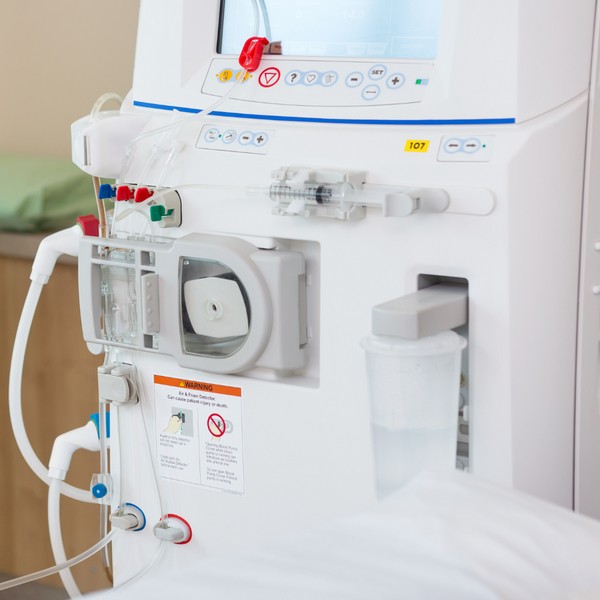Key Takeaways
- Insulin helps regulate blood sugar by moving glucose into cells.
- Imbalances in insulin levels can cause conditions like diabetes.
- Insulin resistance can lead to high blood sugar levels.
- Both high and low insulin can lead to metabolic issues.
- Proper diet and exercise support balanced insulin levels.
What is Insulin?

Insulin is released by the pancreas in response to elevated blood glucose levels, especially after eating.
Its main function is to help cells absorb glucose from the bloodstream, providing energy to tissues and organs.
Without insulin, glucose cannot enter cells and remains in the blood, causing elevated blood sugar levels, which can lead to health complications.
Functions of Insulin
Insulin lowers blood sugar by moving glucose into cells where it can be used for energy. It also signals the liver to store glucose as glycogen for future use.
Insulin helps regulate fat storage by preventing the body from breaking down fat unnecessarily when glucose is available for energy.
Causes of Insulin Imbalance

Several factors can influence insulin levels, including diet, genetics, and physical activity. Insulin imbalances can manifest in two major ways: insulin resistance and insulin deficiency.
Insulin Resistance
Insulin resistance occurs when the body’s cells do not respond well to insulin. As a result, more insulin is needed to help glucose enter the cells.
This can lead to higher blood sugar levels over time. Insulin resistance is a major factor in the development of type 2 diabetes and other metabolic disorders.
Insulin Deficiency
Insulin deficiency happens when the pancreas does not produce enough insulin to maintain normal blood sugar levels.
This is often seen in type 1 diabetes, where the immune system attacks the insulin-producing cells in the pancreas. Without enough insulin, blood sugar levels remain high, leading to various health issues.
Symptoms of Insulin Imbalance

The symptoms of insulin imbalance vary depending on whether insulin levels are too high or too low.
- High Insulin Levels (Hyperinsulinemia): This can cause weight gain, constant hunger, fatigue, and difficulty concentrating.
- Low Insulin Levels (Hypoinsulinemia): Symptoms may include extreme thirst, frequent urination, blurred vision, and unexplained weight loss.
Testing and Diagnosis
Blood tests are commonly used to assess insulin levels and overall blood sugar control. Fasting insulin tests and glucose tolerance tests can help diagnose insulin resistance, type 1 diabetes, or type 2 diabetes.
Testing is often recommended for individuals with a family history of diabetes or those experiencing symptoms related to blood sugar imbalances.
Managing Insulin Levels

Maintaining balanced insulin levels is essential for overall health. Diet and lifestyle changes are effective ways to support insulin function and prevent insulin resistance or deficiency.
Diet and Insulin
Eating nutrient-rich, whole foods can support balanced insulin levels. Grass-fed meats, eggs, and seafood are excellent sources of protein and healthy fats that help maintain stable blood sugar levels.
Avoiding processed foods and refined carbohydrates can prevent spikes in insulin, supporting better glucose control.
Exercise and Insulin
Regular physical activity improves the body’s sensitivity to insulin, making it easier for cells to absorb glucose from the blood.
Both strength training and aerobic exercise are effective in improving insulin sensitivity.
Conclusion
Insulin is essential for managing blood sugar levels and ensuring that the body has a steady supply of energy. Maintaining balanced insulin levels through proper diet and regular exercise is key to preventing health problems related to insulin imbalances, such as diabetes and metabolic disorders.
FAQs
What is the main function of insulin?
Insulin helps move glucose from the bloodstream into cells for energy and regulates blood sugar levels.
What causes insulin resistance?
Insulin resistance is often caused by poor diet, lack of physical activity, and genetic factors. It leads to higher insulin levels and blood sugar imbalances.
How can you naturally improve insulin sensitivity?
Improving insulin sensitivity can be achieved through a diet rich in whole, natural foods like grass-fed meats and seafood, along with regular physical activity.
What are the symptoms of low insulin?
Symptoms of low insulin include extreme thirst, frequent urination, blurred vision, and unexplained weight loss, often associated with high blood sugar levels.
How is insulin tested?
Insulin levels are tested through blood tests, such as fasting insulin or glucose tolerance tests, to assess how well the body is managing blood sugar levels.
Research
Albrink, M.J., Lavietes, P.H., & Man, E.B. (1963). Vascular disease and serum lipids in diabetes mellitus: Observations over thirty years (1931-1961). Ann Intern Med, 58, 305-323.
Albrink, M.J., Man, E.B. (1959). Serum triglycerides in coronary artery disease. Arch Intern Med, 103, 4-8.
Albrink, M.J., Meigs, J.W., & Man, E.B. (1961). Serum lipids, hypertension and coronary artery disease. Am J Med, 31, 4-23.
Ahrens, E.H., Hirsch, J., Oette, K., et al. (1961). Carbohydrate-induced and fat-induced lipemia. Trans Assoc Am Physicians, 74, 134-146.
Allen, F.M., Stillman, E., & Fitz, R. (1919). Total dietary regulation in the treatment of diabetes. Monograph 11. Rockefeller Institute for Medical Research.
Banting, F.G., & Best, C.H. (1922). The internal secretion of the pancreas. J Lab Clin Med, 7, 465–480.
Chukwuma, C.I., Matsabisa, M.G., Erukainure, O.L., Ibeji, C.U. and Islam, M.S., 2019. D-mannitol modulates glucose uptake ex vivo; suppresses intestinal glucose absorption in normal and type 2 diabetic rats. Food bioscience, 29, pp.30-36.
Cran, B. (2018, March 2). The Academic Mob and Its Fatal Toll. Quillette.
Fox, C.S., Pencina, M.J., Melgs, J.B., et al. (2006). Trends in the incidence of type 2 diabetes mellitus from the 1970s to the 1990s. The Framingham Heart Study. Circulation, 113, 2914-2918.
Gaziano, J.M., Hennekens, C.H., O’Donnell, C.J., et al. (1997). Fasting triglycerides, high-density lipoprotein, and risk of myocardial infarction. Circulation, 96, 2520-2525.
Gembillo, G., Labbozzetta, V., Giuffrida, A. E., Peritore, L., Calabrese, V., Spinella, C., Stancanelli, M. R., Spallino, E., Visconti, L., & Santoro, D. Potential Role of Copper in Diabetes and Diabetic Kidney Disease. Metabolites, 13(1), 17.
https://doi.org/10.3390/metabo13010017
Grotto D, Zied E. The Standard American Diet and its relationship to the health status of Americans. Nutr Clin Pract. 2010 Dec;25(6):603-12.
https://pubmed.ncbi.nlm.nih.gov/21139124/
Hatch, F.T., Arell, L.L., & Kendall, F.E. (1955). Effects of restriction of dietary fat and cholesterol upon serum lipids and lipoproteins in patients with hypertension. Am J Med, 19, 48-60.
Henderson, G. (2016). Court of last appeal – the early history of the high-fat diet for diabetes. J Diabetes Metab, 7, 8.
Hill, J.A., Agewell, S., Baranchuk, A., et al. (2009). Medical Misinformation: Vet the message. J Amer Heart Assoc, 18. Available at: [link]
Himsworth, H. (1949). The syndrome of diabetes and its causes. Lancet, 253, 465-473.
Himsworth, H.P. (1936). Diabetes mellitus: Its differentiation into insulin sensitive and insulin insensitive types. Lancet, 1, 127–130.
Joslin, E.P. (1941). A diabetic manual for the mutual use of doctor and patient. Philadelphia: Lea and Febiger.
Kim, C.Y., Lee, J.H., Kim, B.H., Yoo, S.K., Seo, E.S., Cho, K.S., Day, D.F. and Kim, D., 2002. Production of mannitol using Leuconostoc mesenteroides NRRL B-1149. Biotechnology and Bioprocess Engineering, 7, pp.234-236.
Kuo, P.T. (1967). Hyperglyceridemia in coronary artery disease and its management. JAMA, 201, 87-94.
Kuo, P.T., & Bassett, D.R. (1965). Dietary sugar in the production of hyperglyceridemia. Ann Intern Med, 62, 1199-1212.
Kuo, P.T., Feng, L., Cohen, N.N., et al. (1967). Dietary carbohydrates in hyperlipemia (hyperglyceridemia); hepatic and adipose tissue lipogenic activities. Am J Clin Nutr, 20, 116-125.
Mitchell, J. (2019, May 13). Heart and circulatory disease deaths in under 75’s see first sustained rise in 50 years. British Heart Foundation. Available at: [link]
Miselli, M.-A., Nora, E.D., Passaro, N., et al. (2014). Plasma triglycerides predict ten-years all-cause mortality in outpatients with type 2 diabetes mellitus: A longitudinal observational study. Cardiov Diabetol, 13, 135.
Morgan, W. (1877). Diabetes mellitus: Its history, chemistry, anatomy, pathology, physiology and treatment. London: The Homeopathic Publishing Company.
National Diabetes Data Group. (1979). Classification and diagnosis of diabetes mellitus and other categories of glucose intolerance. Diabetes, 28, 1039-1057.
Noakes, T.D., & Sboros, M. (2019). Real food on trial: How the diet dictators tried to destroy a top scientist. U.K.: Columbus Publishing Ltd.
Petersen, M. C., & Shulman, G. I. (2018). Mechanisms of Insulin Action and Insulin Resistance. Physiological Reviews. https://doi.org/PRV-00063-2017
Rabinowitz, I.M. (1930). Experiences with a high carbohydrate low calorie diet for the treatment of diabetes mellitus. Can Med Assoc J, 23, 489-498.
Reaven, G. (2012). Insulin resistance and coronary heart disease in nondiabetic subjects. Arterioscler Thromb Vasc Biol, 32, 1754-1759.
Reaven, G.M. (1988). Banting lecture 1988. Role of insulin resistance in human disease. Diabetes, 37, 1595–1607.
Reaven, G.M. (2005). Why Syndrome X? From Harold Himsworth to the insulin resistance syndrome. Cell Metab, 1, 9-14.
Reaven, G., Strom, T.K., & Fox, B. (2001). Syndrome X. The silent killer. The new heart disease risk. New York, NY: Simon and Schuster.
Reaven, G.M., Lithell, H., & Landsberg, L. (1996). Hypertension and associated metabolic abnormalities—the role of insulin resistance and the sympathoadrenal system. N Engl J Med, 334, 374–381.
Root, H.F., Bland, E.F., Gordon, W.H., et al. (1939). Coronary atherosclerosis in diabetes mellitus. JAMA, 113, 27-30.
Soetaert, W., 1990. Production of mannitol with Leuconostoc mesenteroides. Mededelingen van de Faculteit Landbouwwetenschappen, Rijksuniversiteit Gent, 55(4), pp.1549-1552.
Somogyi, M. (1959). Exacerbation of diabetes by excessive insulin action. Am J Med, 26, 169-191.
Therese, S., & Martin, B. (2015). Resist scientist! Countering degradation rituals in science. Prometheus, 32, 203-220.
Tzagournis, M., Chiles, R., Ryan, J.M., et al. (1968). Interrelations of hyperinsulinism and hypertriglyceridemia in young patients with coronary heart disease. Circulation, 38, 1156-1163.
U.S. Senate Select Committee on Nutrition and Human Needs. (1977). Dietary Goals for the United States, 2nd ed. Washington, D.C., U.S.: Government Printing Office.
Williams, D.M., 1983, April. Copper deficiency in humans. In Seminars in hematology (Vol. 20, No. 2, pp. 118-128).
Dialysis: Benefits & Challenges
Key Takeaways Dialysis removes waste and excess fluid from the blood when kidneys cannot function. Two main types: hemodialysis (machine-based) and peritoneal dialysis (abdomen-based). Dialysis…
Allergy-Friendly Pets
Key Highlights Hypoallergenic pets are great for people with pet allergies, as they produce fewer allergens like dander, saliva, and proteins that can trigger symptoms….
SIBO Bloating: Causes, Diet, & Management Tips
Key Takeaways SIBO disrupts gut bacteria balance, causing bloating, pain, and nutrient absorption issues. Symptoms include bloating, abdominal pain, diarrhea, constipation, weight loss, and fatigue….
Inflammation: Causes & Effects
Key Takeaways Inflammation is the body’s response to injury or infection, but chronic inflammation can lead to health problems. Iron overload from artificial sources and…
Coping with Pet Allergies: Tips & Advice
Key Highlights Pet allergies often cause sneezing, coughing, itchy eyes, and skin rash. Pet allergens are in the saliva, urine, and dander of furry animals….
7 Simple Tips for Lowering Blood Pressure Naturally
Maintaining healthy blood pressure levels is essential for overall well-being, as high blood pressure can lead to serious health complications. However, it is possible to…
L-Glutamine and Gut Health: Benefits and Side Effects
Key Takeaways L-Glutamine is essential for gut health. Benefits include improved digestion and reduced inflammation. Potential side effects are rare but can occur in high…
Chronic Kidney Disease (CKD): Causes & Treatment
Key Takeaways Ultra-processed foods and high carbohydrate intake worsen inflammation, harming kidney function. Iron overload leads to oxidative stress, which accelerates CKD progression. Copper is…
Triglycerides: Levels & Range Explained
Key Highlights Triglycerides are the most common form of fat in the body play a role in energy storage High levels of triglycerides can increase…
Signs of Diabetes: Recognizing the Red Flags
Key Takeaways Increased Thirst and Urination: High blood sugar leads to dehydration, causing excessive thirst and frequent urination. Unexplained Weight Loss: Diabetes can cause the…
Atherosclerosis Prevention Strategies: Insights from Scientific Research
Key Takeaways Atherosclerosis is the hardening and narrowing of arteries caused by plaque buildup. Chronic inflammation and oxidative stress contribute to the development of plaque….
Is Eating Sugar Really That Bad For Your Health?
Should You Really Be Concerned? In short, YES! Thank you, that’s all folks, and do have a good evening. Seriously though, extensive research has established…
Vegetable Oil: Health Risks You Might Not Know
Key Takeaways: Omega-6 fats from vegetable oils cause oxidative stress and inflammation. Reducing omega-6 intake and using stable fats can lower health risks. High triglycerides…
Histamine: What You Should Know
Key Takeaways Histamine’s Role: Vital in immune responses, digestion, and as a neurotransmitter in the central nervous system. Histamine Production: Produced in mast cells and…
Insulin Resistance: What It Is & How to Manage It
Key Takeaways Insulin resistance leads to high blood sugar when cells stop responding to insulin. Often connected to obesity, poor diet, and physical inactivity. Symptoms…
Metabolic Health: What It Means and How to Improve It
Key Takeaways Metabolic health reflects how well your body processes energy and maintains stable blood sugar, cholesterol, and blood pressure. Key indicators of metabolic health…
Metabolic Syndrome: Managing This Health Risk
Key Takeaways Metabolic syndrome is a cluster of conditions increasing the risk of heart disease, stroke, and diabetes. Symptoms include high blood pressure, high blood…
Alcohol and Its Effects
Key Takeaways Alcohol is metabolized primarily in the liver, producing acetaldehyde, a toxic byproduct. Chronic alcohol consumption leads to liver damage, including fatty liver, hepatitis,…
Supporting Mental Health with Gut Health
Key Takeaways Gut-Brain Connection: Gut health is directly linked to mental wellbeing through the gut-brain axis. Probiotics: Beneficial bacteria that help regulate mood and support…
Postbiotics: What They Are and Why They Are Important
Key Takeaways Postbiotics 101: They’re beneficial by-products from probiotics that consume prebiotics Boosts Immunity: Postbiotics sharpen your immune system, helping fight off pathogens and reducing…
Parkinson’s Disease : Symptoms, Causes & Treatment
Key Takeaways Parkinson’s disease is a progressive neurological disorder that affects movement and coordination. Oxidative stress and excess iron are significant factors in the progression…
Uric Acid: Effects & Management
Travel Hygiene Tips: Stay Fresh on the Go
Key Highlights Key practices include frequent handwashing, showering, and oral care. Packing a portable hygiene kit can help you stay fresh on the go. Advanced…
Iron Overload: Symptoms & Prevention Tips
Key Takeaways: Iron overload happens when the body absorbs excessive iron, which can damage organs. Common symptoms include fatigue, joint pain, and skin changes. Early…
Non-Alcoholic Fatty Liver Disease (NAFLD)
Key Takeaways NAFLD involves fat buildup in the liver not caused by alcohol. Commonly associated with obesity, insulin resistance, and metabolic syndrome. NAFLD can lead…
Quit Sugar for 14 Days: What Happens to Your Body?
Key Takeaways: Immediate Health Benefits of Reducing Sugar: In just two weeks, enjoy enhanced energy levels, weight loss, a reduced risk of chronic diseases, and…
7 Remedies for Kidney Stones: A Comprehensive Guide
Key Takeaways Staying well-hydrated and adopting a balanced diet can help prevent kidney stones. Knowing the causes of kidney stones can inform effective prevention strategies….
High Homocysteine: How to Manage Levels
Key Takeaways: Elevated homocysteine can raise the risk of heart disease and other health problems. Animal-based foods high in B vitamins help reduce homocysteine levels….
Diabetes: Everything You Need to Know
Key Takeaways Type 1 and Type 2 diabetes involve insulin regulation issues, with Type 2 being the most common due to insulin resistance. Copper, retinol,…
Remnant Cholesterol (RC): Its Origins & Impact
Key Takeaways Remnant cholesterol (RC) is the cholesterol content left in the blood after triglycerides are removed from VLDL and IDL particles. RC is a…
How to Lower Triglycerides Fast: Natural Solutions
Key Highlights Triglycerides, a type of fat found in the blood, are essential indicators of metabolic health. Elevated triglyceride levels increase the risk of heart…
Boost Insulin Sensitivity Naturally
Key Takeaways Improving insulin sensitivity helps control blood sugar and reduces the risk of metabolic disorders. Regular physical activity enhances how cells respond to insulin….
Alzheimer’s Disease: Symptoms, Causes, Treatment
Key Takeaways Alzheimer’s disease is a progressive neurodegenerative disorder affecting memory, thinking, and behavior. Oxidative stress, including from excess iron, plays a significant role in…
Proteolytic Enzymes and Heart Health: What the Research Shows
Your heart works tirelessly to pump blood throughout your body, delivering essential nutrients and oxygen to your cells. However, factors like poor diet, stress, and…










































